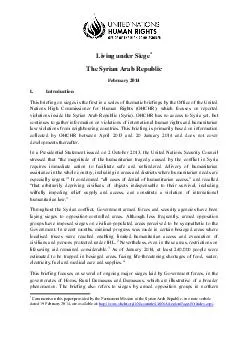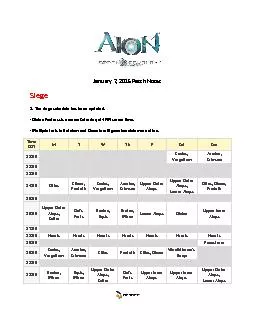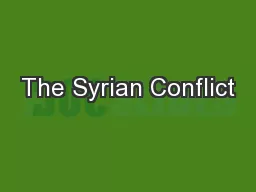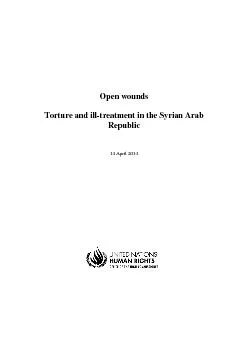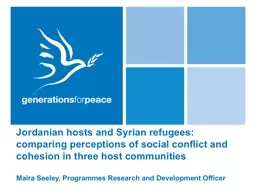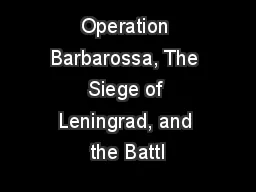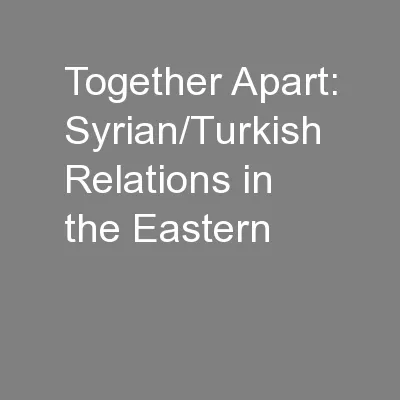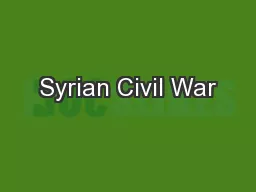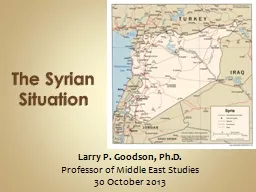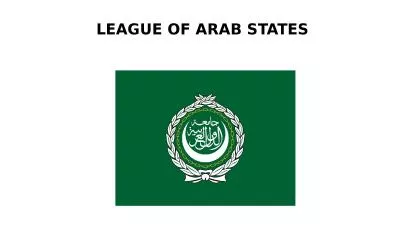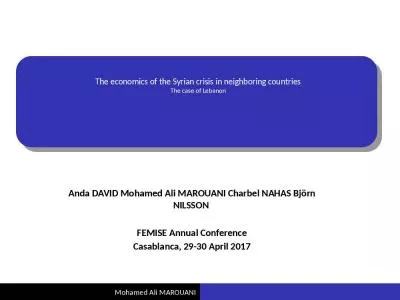PDF-Living under Siege The Syrian Arab Republic February I
Author : olivia-moreira | Published Date : 2014-11-16
Introduction This briefing on sieges is the first in a series of thematic briefings by the Office of the United Nations High Commissioner for Human Rights OHCHR
Presentation Embed Code
Download Presentation
Download Presentation The PPT/PDF document "Living under Siege The Syrian Arab Repub..." is the property of its rightful owner. Permission is granted to download and print the materials on this website for personal, non-commercial use only, and to display it on your personal computer provided you do not modify the materials and that you retain all copyright notices contained in the materials. By downloading content from our website, you accept the terms of this agreement.
Living under Siege The Syrian Arab Republic February I: Transcript
Download Rules Of Document
"Living under Siege The Syrian Arab Republic February I"The content belongs to its owner. You may download and print it for personal use, without modification, and keep all copyright notices. By downloading, you agree to these terms.
Related Documents

